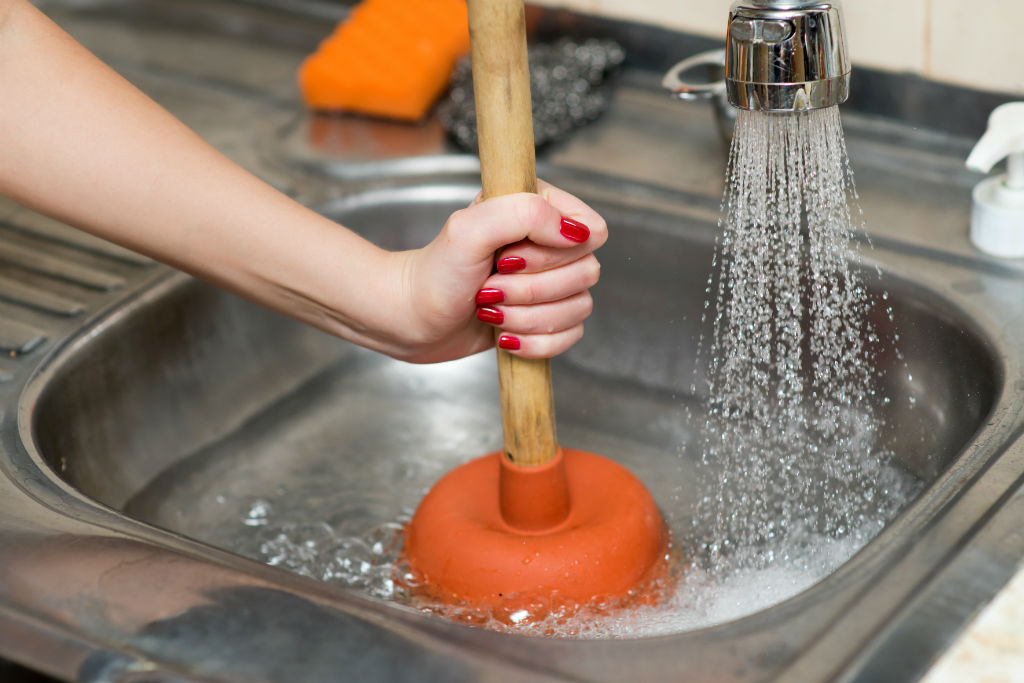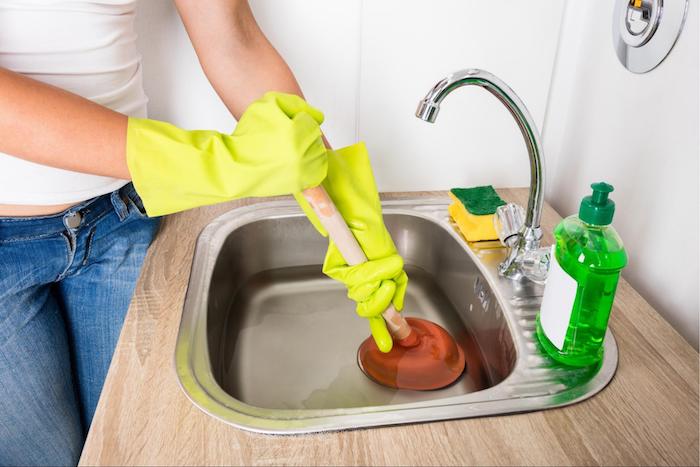Practical Ways To Fix Slow-Draining Sink Problems
Practical Ways To Fix Slow-Draining Sink Problems
Blog Article
On this page on the next paragraphs you can get some professional insight concerning Solved! How to Fix a Slow Sink Drain.

Introduction
We've all existed: You're brushing your teeth or washing your hands, and you observe the water pooling in the sink. As opposed to promptly swirling down the tubes, it sticks around, turning your once-refreshing morning routine right into a miniature swamp scene. A slow-draining sink isn't just annoying; it's frequently an indicator of larger pipes issues prowling under the surface area. The bright side is that most slow-draining sinks can be fixed with a little knowledge, a few basic devices, and some persistence. Prepared to tackle this job head-on? Allow's roll up our sleeves and dive right in.
Recognizing the Root Causes Of a Slow-Draining Sink
Before you begin poking around in your pipelines, it aids to understand what might be triggering the stagnation. Comprehending the source makes it much easier to select the ideal fix.
Usual Wrongdoers Behind Slow Water Drainage
So, what's clogging things up? Typically, it's a mix of everyday debris-- believe hair, soap residue, tooth paste deposit, and remaining food bits. Gradually, these tiny bits accumulate and cling to the pipeline walls, progressively tightening the flow and making it harder for water to travel through. In many cases, mineral deposits from hard water can likewise include in the substance, developing the ideal tornado for stubborn blockages.
When is it Time to Do Something About It?
If you notice the water draining pipes slower than usual, it's a great idea to intervene faster rather than later on. Waiting also long can lead to complete clogs, undesirable smells, or even pipeline damages. If the water takes more than a couple of seconds to clean out after turning off the faucet, consider it a warning and prepare to put on your do it yourself hat.
Devices and Materials You'll Require
The right devices make all the difference. The good news is, you won't require a fully stocked plumbing's van to get the job done.
Important Tools for Do It Yourself Repair Works
A bettor is your best starting factor. A little, sink-sized plunger develops suction that can displace minor blockages. For even more relentless obstructions, a drainpipe serpent (in some cases called a plumbing's auger) functions marvels. A set of gloves, a flashlight, and maybe a pair of protective goggles are likewise helpful.
Advised Cleansing Solutions
Mild meal soap and warm water can aid break down greasy build-up. A mix of baking soft drink and vinegar is a tried and true natural home remedy, and chemical cleaners use an even more environmentally friendly method. Keep chemical drainpipe cleaners as a last resort, as they can be severe on your pipes.
Security First: Safety Measures and Preparations
Prior to you launch into unclogging setting, think about safety and security. You're managing potentially unclean water and debris, so slip on a pair of gloves. If you're utilizing chemical cleansers, guarantee the space is well-ventilated and comply with the directions on the tag.
Protective Equipment and Work Area Setup
Set some old towels or dustcloths around the sink location to catch dashes. Clear away any kind of things that could enter your means, like soap dispensers or tooth brush holders. Make sure you have good illumination-- order a flashlight if needed.
Step-by-Step Guide to Taking Care Of a Slow-Draining Sink
Currently, let's get into the nitty-gritty. This step-by-step process will direct you through straightforward methods to restore your sink's water drainage.
Action 1: Eliminate and Tidy the Stopper
Usually, the stopper (that little plug you push down to obstruct water) is the very first wrongdoer. Remove it thoroughly and clean off any kind of hair or substance caught around its base. Rinse it completely prior to placing it back in place.
Step 2: Utilize a Plunger to Dislodge Particles
Got that bettor all set? Setting it over the drainpipe and offer it a couple of firm pumps. The concept is to develop suction that can loosen any type of blockage. If you see littles debris drifting up, you get on the ideal track.
Action 3: Attempt a Drain Snake or Wire Hanger
If the plunger does not suffice, it's time to highlight the drain serpent. Delicately feed it right into the drain and spin as you go. You may feel some resistance-- that's most likely the clog. Maintain turning and pulling till you get rid of the blockage. If you do not have a drain serpent, a straightened cord hanger can operate in a pinch.
Tip 4: Use a DIY Drainpipe Cleanser
A natural cleaner made from baking soft drink and vinegar can break down recurring grime. Pour half a cup of cooking soda into the drainpipe, complied with by half a cup of vinegar. Let it fizz for around 15 minutes, then flush with warm water. This chain reaction often does marvels for minor obstructions.
Step 5: Reassemble and Check the Sink
Put every little thing back with each other and run the tap. Does the water currently swirl down the drain at a commendable speed? If yes, provide yourself a pat on the back. Otherwise, do not misery-- there are still a couple of more dress up your sleeve.
Different Methods for Stubborn Clogs
Not all obstructions are produced equal. If your sink still rejects to cooperate, think about these alternate remedies.
Sodium Bicarbonate and Vinegar Method
We currently discussed this, yet it deserves keeping in mind once more. This mild, environmentally friendly technique is safer than chemical cleansers and usually fairly reliable.
Chemical Drainpipe Cleansers
Enzyme-based cleansers use natural bacteria to digest raw material. They're an exceptional selection if you're seeking to avoid extreme chemicals. Just bear in mind, they may take a bit longer to work their magic.
Chemical Drainpipe Cleaners: Pros and Cons
Chemical cleaners can blow up with hard blockages quick, but they're not without disadvantages. They can produce heat and fumes, damage pipes if used excessively, and pose environmental threats. Utilize them sparingly, and constantly adhere to the directions meticulously.
Safety Nets to Keep Your Sink Flowing
Avoidance is the best treatment. By taking on a few straightforward habits, you can maintain your sink from reducing to begin with.
Normal Cleansing Routines
Wipe down the sink container and fixture location consistently. Get rid of hair or food fragments before they have a chance to wash down the drainpipe.
Preventing Hazardous Substances Down The Tubes
Reconsider prior to dumping coffee grounds, oil, or coarse vegetable scraps down the sink. These culprits hold on to pipeline walls, developing clogs gradually.
Regular Upkeep Checks
Set up a quick regular monthly inspection. Run warm water through the sink for a few minutes, paying attention to the circulation. If it seems sluggish, act fast prior to it comes to be a full-blown blockage.
When to Call an Expert Plumbing Technician
Occasionally, regardless of exactly how tough you try, that block just will not move. That's when it's time to bring in the pros.
Indications That Show a More Serious Concern
If your sink drains pipes gradually in spite of multiple attempts, or if you discover water backing up in other fixtures (like your shower or commode), you might have a much more significant plumbing problem hiding deeper in the system.
Stabilizing Do It Yourself Efforts with Specialist Aid
While do it yourself can conserve you money and supply a sense of achievement, there's no embarassment in calling a specialist. A professional plumbing can assess your whole pipes arrangement, making sure there's no underlying damage or long-lasting issue that can cost you much more later on.
Comparing Costs and Long-Term Solutions
Before choosing, take into consideration the big picture. An inexpensive, quick fix might resolve the trouble briefly, yet buying a much more irreversible option could conserve you cash and anxiety over time.
Considering the Expenses of Do It Yourself vs. Expert Fixes
Do it yourself fixes usually set you back bit more than the price of a plunger or a bottle of baking soda. Expert solutions, on the other hand, included a cost but may avoid repetitive issues and costly repairs later on.
Purchasing High Quality Fixtures and Upgrades
If your sink's style contributes to frequent obstructions, it might be worth updating to higher-quality components or changing the pipes design. Consider this a financial investment in your home's functionality and convenience.
Final thought
A slow-draining sink can seem like a minor irritation, but it's frequently a sign that your plumbing needs a little TLC. By recognizing the root causes, using the right devices and strategies, and devoting to straightforward safety nets, you can maintain your sink streaming easily. And when all else stops working, never wait to call in a specialist-- your home's pipes deserves the investment in treatment and upkeep.
Three Common Ways to Fix a Slow Drain
Baking Soda Method
Boil a full pot of water. Measure out cup of baking soda and pour it down the drain. Then take cup of the magical cleansing substance known as white vinegar and drop that down there too. Allow the mixture to fizz in the drain for five minutes as the vinegar and baking soda combine. Now dump in that whole pot of boiling water. This combination of cleaning substances should clear out anything that is causing your sink to drain slowly. If it doesn t...
Zip-It
If the baking soda method doesn t clear out your drain, it may be because a significant amount of hair and/or other debris has collected there and you need to remove it. Purchase a Zip-It tool at any home improvement or hardware store and insert it into your drain. It will catch any collected hair or debris that s blocking the flow of water. Pull it out. If it s got a big clump of hair, etc. on the end, you ve probably got your culprit.
Drain Cleaner
If these methods don t work, there is the standard drain cleaner that you can also buy in a hardware store or even your local grocery store. It s better if you can use a household solution, but these drain cleaners often work in a pinch. They re very simple to use. You generally just dump them in your drain and wait. If even this method is not effective, it may be time to call the plumber.
https://www.mrrooter.com/oneida/about-us/blog/2017/july/three-common-ways-to-fix-a-slow-drain/

I found that article on How to Fix a Slow Draining Sink while doing a search on the search engines. In case you appreciated our post if you please don't forget to pass it around. We recognize the value of reading our article about Solved! How to Fix a Slow Sink Drain.
Booking Page Report this page